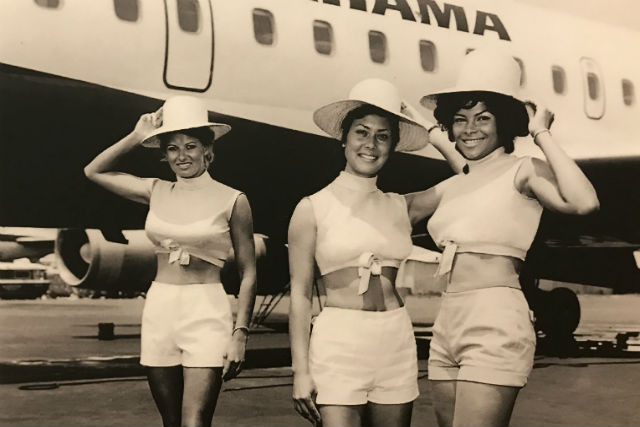Luxair had successfully tapped into business travel demand of domestic and greater region passengers during the week. But at weekends, their planes sat idle. “That’s when we saw the potential market here of people who wanted to go to the Mediterranean destinations for their holidays,” former Luxair vice president and commercial director Théo Breisch told Delano.
In 1965, the airline bought a Vickers Viscount, a turboprop with 65 seats that was better suited to flying further afield to places in the Mediterranean like Athens and Yugoslavia. The airline quickly saw there was a demand for package holidays. Other airlines were already rolling out seasonal package brochures from 1965.
Luxair launched its tour operator, Luxair Tours, in 1968 with a shiny new brochure filled with photos of sunny resorts and a captive regional market that at the time had no rival. But they still needed to make their mark.
“The then-CEO Roger Sietzen was an economist but he was very quality-minded. He said, ‘we’re a small, ugly airline. We’ve small planes, our offer isn’t the same. So, what can we do to be better at least on those destinations we fly to?’” Breisch recalled.
One idea was to offer a small meal and a free drink to customers in economy as well as business class. At the time airline consortium the International Air Transport Association prevented its members from offering this value-added service. Within Luxair’s board of directors, it was initially viewed with scepticism until it became a distinguishing feature of the airline. “The effect was extraordinary,” Breisch said, adding: “I’m glad the management of the company is still operating according to that principle.”
Former Luxair vice president and commercial director Théo Breisch is pictured with Luxair former CEO Roger Sietzen. Photo: Maison Moderne/Patricia Pitsch
Libya and the Bahamas
The airline continued its expansion and needed more planes. In 1970, an opportunity arose to lease-purchase a new plane, a 90-seat, twin engine Caravelle 6R jet built by Sud Aviation for Libyan airlines. Libya had been forced to cancel the order because of civil unrest resulting in the king fleeing the country. The plane even had the airline’s name written in large gold letters. Luxair Tours was now able to expand its network to include destinations with a 3.5-hour range of Luxembourg. Malaga, Tunis and Morocco were now within easy reach.
But it was not only Luxembourgers who used the airline. Loftleidir had a large stake in Air Bahamas, which flew regular flights from Luxembourg to Nassau. The airline had some notoriety because of the revealing uniforms the stewardesses wore: hot pants and crop tops. And it proved popular with international stars—among its regular passengers was French actress Brigitte Bardot. Breisch recalled sitting next to her on a Luxair flight from Paris to Luxembourg, from where the actress was flying on to the Bahamas. “When I accompanied her to the old airport terminal, she looked around and said: ‘Is this an old barracks?’”

An aerial view of Luxembourg's Findel airport in 1966. Photo courtesy of the Musée d'Aviation Mondorf-les-Bains
The advert
As well as operating its own flights, Luxair had continued as a freight and passenger handling agent for the various airlines landing at Findel. Its tourism business was taking off and it had no plans to develop handling further, until Loftleidir placed an advert in “Flight Magazine” to sell one of its planes: the CL44 Canadair with a swing tail for placing cargo inside. “Icelandair wanted to get rid of it for fuel cost reasons and they wanted bigger capacity,” said Breisch.
At the same time, Salen, a Swedish shipping firm with business in the Far East was looking to get into the air freight business. Icelandair’s Luxembourg representative, Einar Aakrann, brought Salen, Icelandair and Luxair together and proposed the creation of a new cargo airline. “I didn’t have to push too much,” recalled then-CEO Roger Sietzen. “It was so important that we had Icelandair who had the technical knowhow, and Salen, who had the commercial knowhow.”
Cargolux was born in 1970 and right from the get go it had cargo to fly, thanks to Salen. This business segment grew and in 1975, Cargolux inaugurated its new container terminal, the Luxair Cargocentre.

